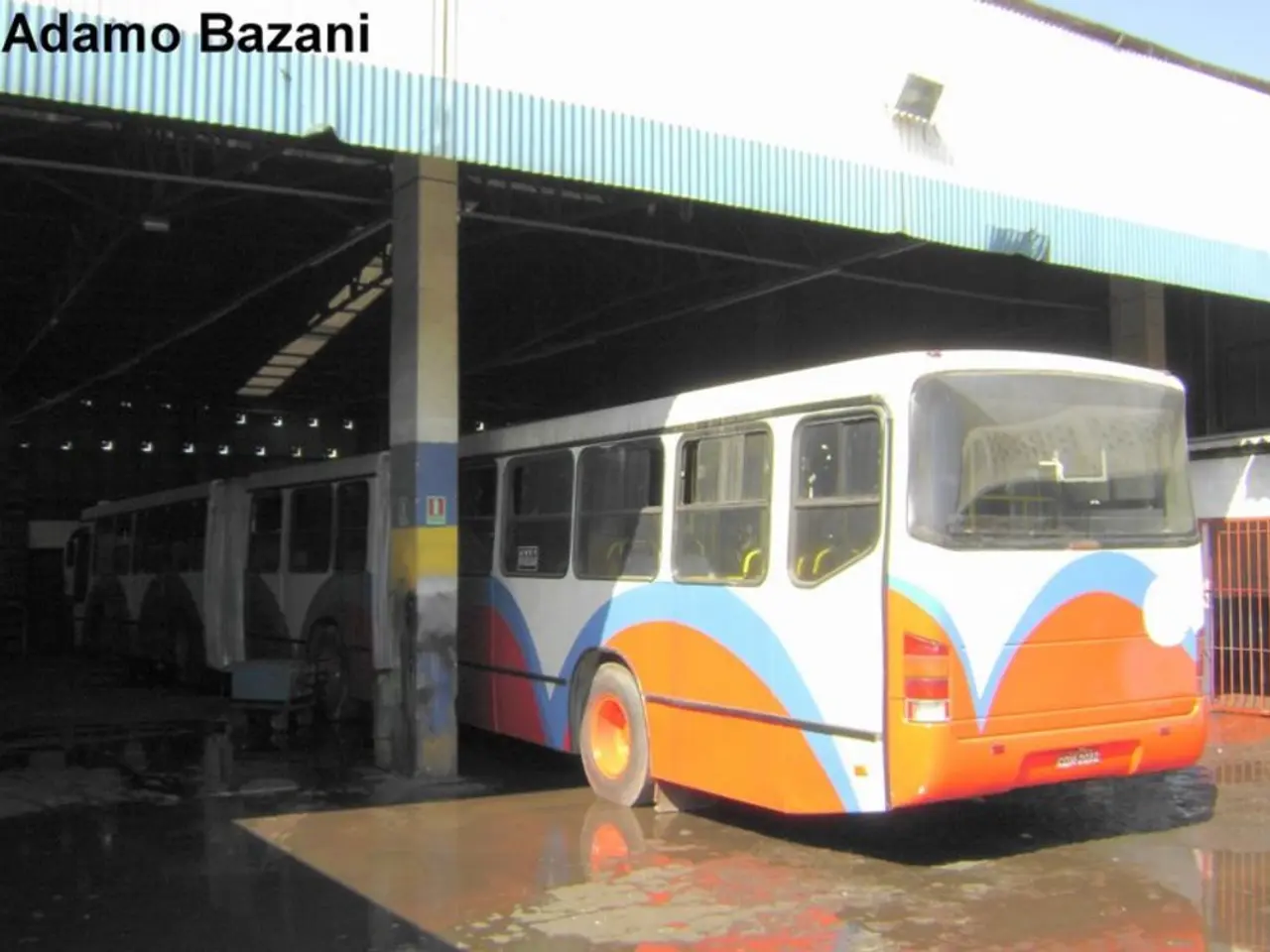Fire Department Deploys Oil Barrier Over Main Area to Contain Oil Pollution Spread - Oil spill: Firefighters impede oil flow on Main Street
In the heart of the Aschaffenburg district, firefighters and water police have taken swift action to contain an oil spill reported in a basin at the Stockstadt coal harbor. The incident, which took place on the Main river, has seen the deployment of a 150-meter-long oil barrier to collect oil at several locations.
The oil barrier, a highly effective tool in preventing environmental damage from oil spills, creates a containment area that allows for efficient collection and recovery of oil. It is designed to be durable and resistant to chemicals, enabling control of contaminated water bodies and directing the oil to designated disposal zones.
Oil containment booms are versatile and rapid-response devices critical in minimizing environmental impact from spills in rivers and lakes. In Stockstadt, located on the Main River within a sensitive ecological and urban area, the deployment of these barriers is expected to substantially reduce further environmental damage by preventing the downstream spread of oil, facilitating targeted cleanup actions, and protecting ecologically sensitive or urban shoreline areas.
However, specific documented outcomes regarding the Stockstadt oil spill are not yet detailed. Nonetheless, the general demonstrated effectiveness of oil containment booms in inland water spill responses suggests that their deployment in this scenario would be beneficial.
The cause of the oil spill at the Stockstadt coal harbor remains unknown. The water police are involved in the operation to contain the pollution from the oil slick, and the oil barrier is expected to remain in the Main for several more days.
At this time, no information is provided about any potential impact on the environment or nearby areas, but the deployment of the oil barrier shows a proactive approach to mitigate the effects of the spill. As more information becomes available, updates will be shared regarding the progress of the cleanup efforts and any impacts on the local ecosystem.
[1] Oil Spill Response: Prevention, Preparedness, and Cleanup Techniques. (2019). Retrieved from https://www.epa.gov/oil-spills/oil-spill-response-prevention-preparedness-and-cleanup-techniques
[2] Inland Oil Spill Response. (n.d.). Retrieved from https://www.epa.gov/oil-spills/inland-oil-spill-response
- The community policy, in light of the Stockstadt oil spill, should emphasize the importance of emergency response measures to protect sensitive ecological and urban areas.
- Employment policies in the science sector, specifically environmental science, may benefit from augmenting resources for research and development of more efficient oil spill containment technologies.
- In the face of increasingly frequent oil spills and climate change, the industry should focus on adopting pollution-prevention practices and transitioning towards renewable energy sources like wind, solar, and hydroelectric power to minimize reliance on non-renewable energy sources such as oil and gas.
- Finance institutions can play a crucial role in supporting the clean-up efforts after oil spills, and thereby contribute to the preservation of the environment and the sustenance of local communities by providing loans for disaster recovery projects.




